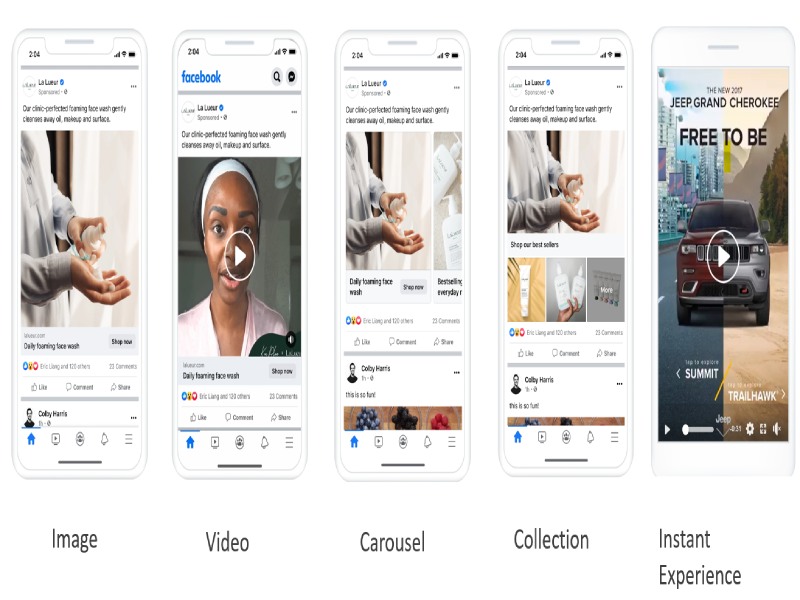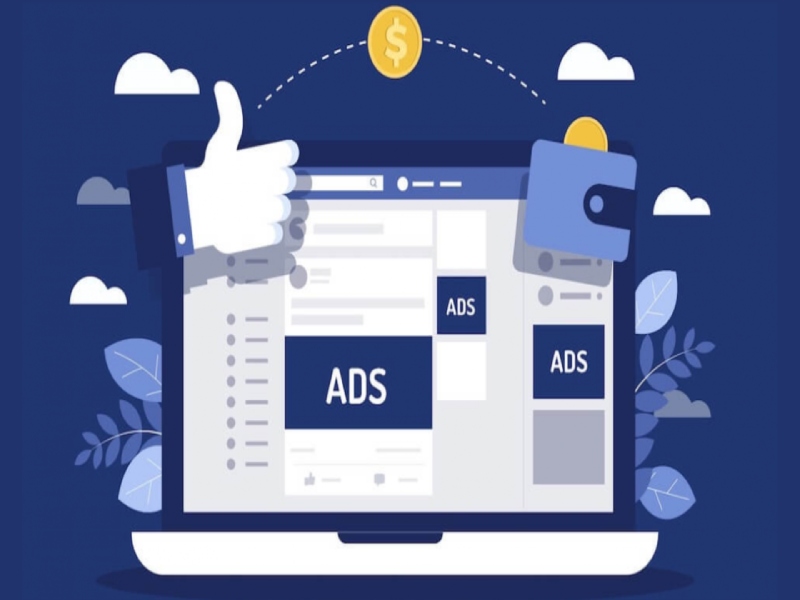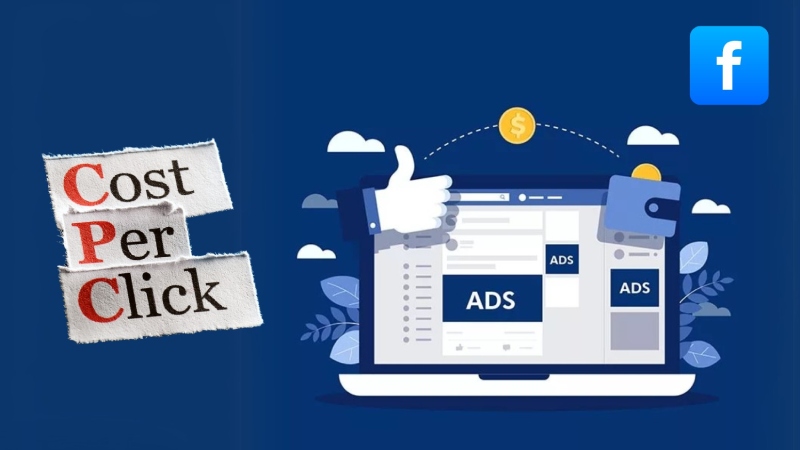Looking to automate and personalize your ads? Dynamic Facebook Ads help businesses deliver the right products to the right audience efficiently without manually creating multiple ads. Learn how to set up, optimize, and leverage this powerful tool to boost conversions, retarget effectively, and maximize ad performance!
What Are Dynamic Facebook Ads?
Dynamic Facebook Ads is an automated ad format by Meta that uses data from the Meta Pixel or SDK to display relevant products based on user behavior and interests. Instead of manually creating individual ads, Dynamic Ads automatically promote your entire product catalog across Facebook, Instagram, and Audience Network.
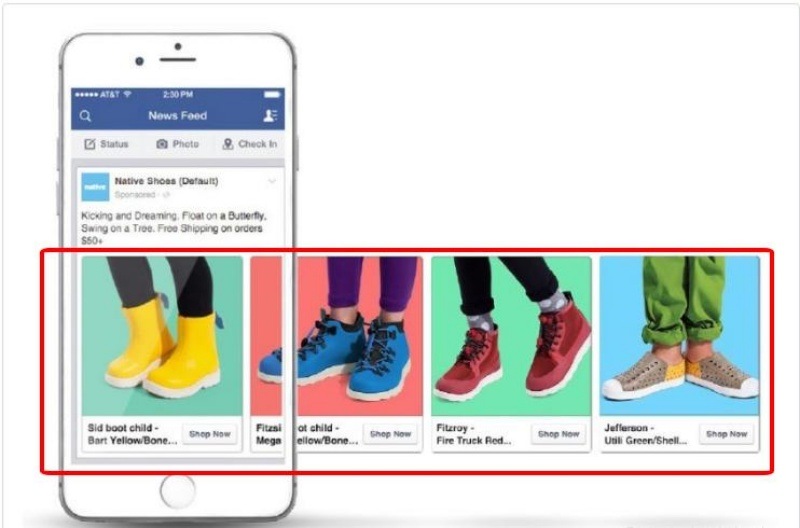
Key Features of Dynamic Facebook Ads:
- Automation: Automatically selects and displays products based on user activity.
- Personalization: Tailors ad content to each user’s behavior and preferences.
- Scalability: Promotes an entire catalog without needing to create thousands of individual ads. You can automatically promote your entire product catalog on Facebook, Instagram, and Audience Network.
Dynamic Ads collect intent signals from customers based on their actions on your website and app to ensure the right product reaches the right person.
How Dynamic Ads Work for Retargeting
Dynamic Ads play a crucial role in retargeting potential customers who have engaged with your brand but haven’t completed a purchase.
For dynamic ads facebook example, a user adds a product to their cart but abandons checkout. With Dynamic Ads, that exact product will appear in their Facebook feed, encouraging them to return and complete the purchase.
By leveraging Dynamic Ads, businesses can maximize conversions by showing the right product to the right person at the right time—without extra manual effort.
Key Benefits of Facebook Dynamic Ads
Personalization:
- Displays the exact products users are interested in.
- Increases conversion rates by creating a sense of “being understood.”
Time-saving:
- Automatically updates ads when there are changes in the product catalog (price, stock).
- Eliminates manual effort in creating ads for each product.
Cost-efficiency:
- Maximizes ROI by targeting users with the highest purchase intent.
- Reduces budget waste on non-potential audiences.
Enhanced engagement:
Uses appealing and accurate product images to drive higher click-through rates (CTR).
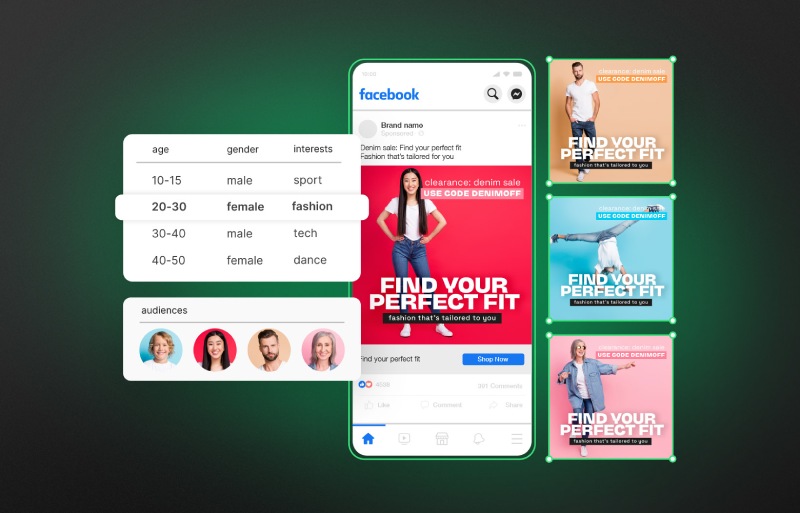
How Do Facebook Dynamic Ads Work?
Dynamic ads are automatically generated using a product catalog and user data, showing the most relevant products based on a user’s behavior. Non-dynamic ads, on the other hand, require manual creation and customization, meaning advertisers must create separate ads for each product or offer. This highlights what is the difference between dynamic and non-dynamic ads?
Here’s a breakdown of how these elements work together:
Catalog setup:
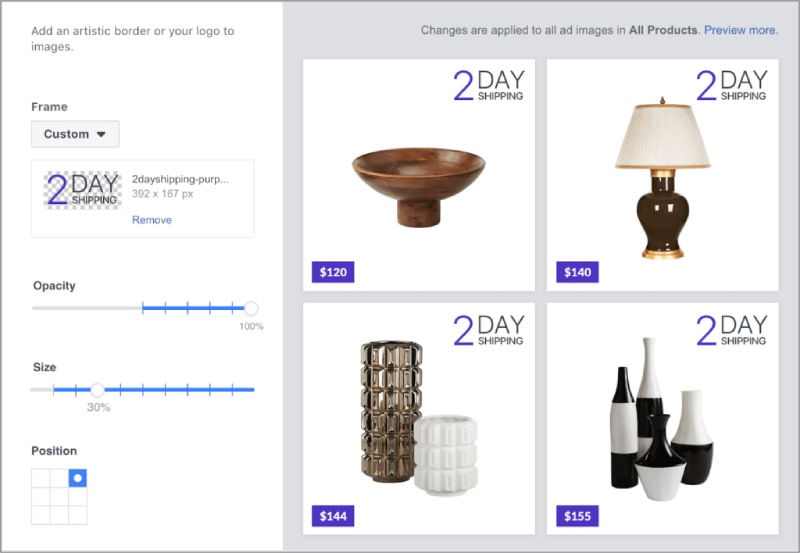
The Product Catalog is the foundation of Facebook Dynamic Ads. It contains detailed information about each product you want to advertise, allowing Facebook to dynamically match items with potential customers.
Setup Guide:
- Create a Catalog in Facebook Commerce Manager:
-
- Go to Commerce Manager in Meta Business Suite and create a new catalog.
- Choose the appropriate catalog type based on your business (e.g., e-commerce, travel, real estate).
- Ensure Complete and Accurate Product Details.
- Include essential information for each product:
-
- Product Name: Clear, relevant to the item.
- Price: Displayed in the correct currency.
- Description: Compelling, concise, and informative.
- Image URL: High-quality images that represent the product well.
- Availability: Stock status (in stock, out of stock, pre-order).
- Brand & Category: Helps with better ad targeting.
- Categorize Products for Better Targeting:
-
- New Arrivals: Highlight the latest products.
- Discounted Items: Target deal-seekers.
- Best Sellers: Feature top-performing products.
- Seasonal Collections: Promote products based on upcoming trends.
Facebook Pixel or SDK:
To make Dynamic Facebook Ads truly effective, you need to track user interactions. This can be done through Facebook Pixel (for websites) or SDK (for mobile apps).
Pixel:
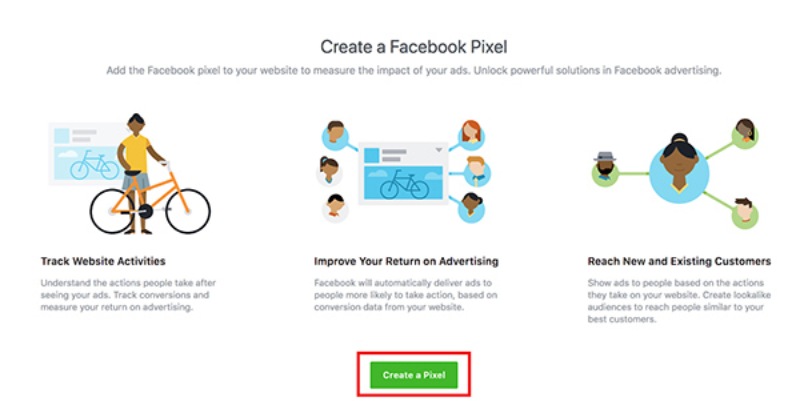
The Facebook Pixel is a small code snippet added to your website that tracks visitor activity and sends data back to Facebook for better ad personalization. It collects key user actions such as:
- Product Views: When a user visits a product page.
- Add to Cart: When a product is added to the cart.
- Purchases: When a user completes a purchase.
- Checkout Initiations: When a user starts but does not complete the checkout process.
Pixel data helps Facebook automatically retarget users who have shown interest in your products, increasing the likelihood of conversions.
SDK:
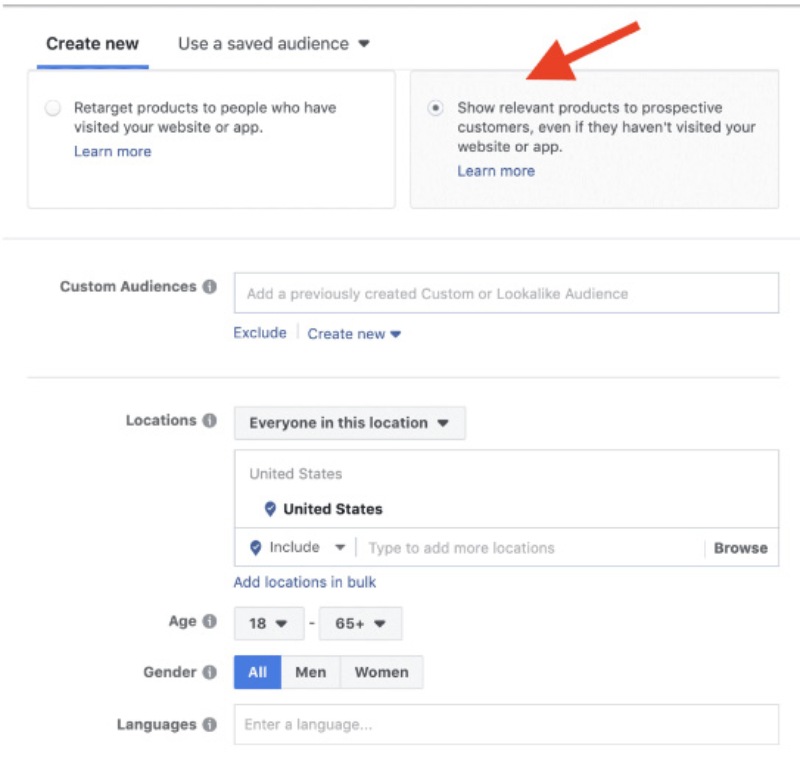
If you have a mobile app, you’ll need to integrate the Facebook SDK to track in-app user behavior. Similar to Pixel, the SDK captures actions such as:
- In-app product views
- Add-to-cart events within the app
- App purchases and checkout behavior
For e-commerce apps, SDK tracking allows Facebook to optimize ads specifically for app users, helping drive sales and app engagement.
Dynamic Templates:

Instead of manually creating an ad for each product, Facebook Dynamic Templates use the Product Catalog to automatically generate ads based on user interests. This is how dynamic templates work:
- Pull product information directly from the Product Catalog.
- Customize ad elements dynamically, including product title, price, discounts or promotions and high-quality product image.
- Deliver ads that are personalized for each user, ensuring they see products they are most likely to buy.
Dynamic Templates save time, reduce ad creation workload, and provide a seamless, personalized experience for potential buyers.
What businesses must use Facebook Dynamic Ads?
Any business that uses a Product Catalog can benefit from Facebook Dynamic Product Ads (DPA)—especially when targeting the right audience. DPA, a key component of Facebook’s Dynamic Creative, is designed to deliver highly personalized and high-performing ads.
To run Dynamic Product Ads, you first need to set up a Facebook Product Catalog, which serves as the database containing all product details. It helps Facebook automatically generate relevant ads based on user behavior, increasing the likelihood of conversions.
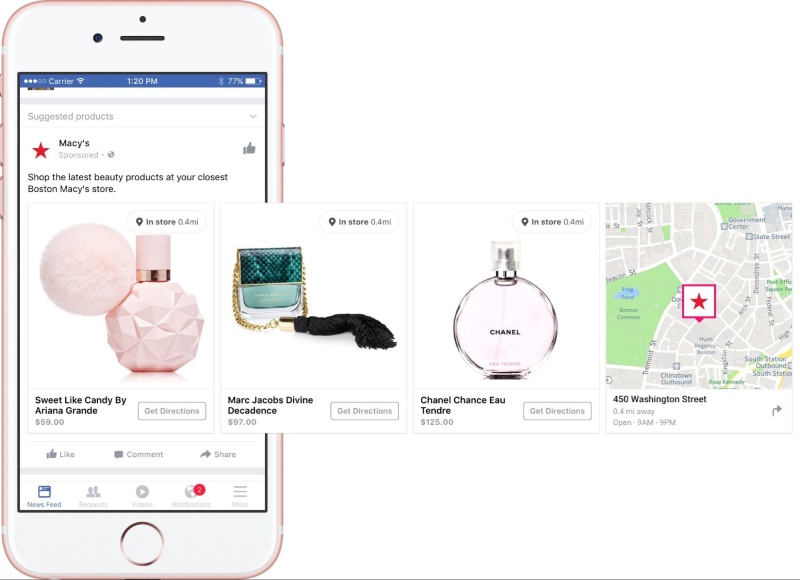
Dynamic Product Ads are particularly effective in industries where consumers frequently browse and compare products before making a purchase. The most common industries utilizing DPA include:
- E-commerce: Online retailers can showcase entire product catalogs, automate retargeting, and optimize ad spend to drive sales.
- Travel & hospitality: Airlines, hotels, and tour operators can use DPA to show personalized recommendations, such as recently searched flights or hotel stays.
- Real estate: Property listings can be dynamically displayed based on user’s search behavior and preferences.
- Automotive: Car dealerships and auto marketplaces can automatically promote available vehicles tailored to potential buyers’ interests.
Businesses in these sectors rely heavily on consumer intent and browsing behavior. Dynamic Facebook Ads ensure that users see the most relevant products or services, making them a cost-effective and high-converting ad format for these industries.
|
Comparison |
Recommendation |
| Dynamic Ads vs. Static Ads | Dynamic Ads automatically adjust product details, such as pricing and availability, while Static Ads require manual updates. This makes Dynamic Ads more scalable and personalized. |
| Dynamic Ads vs. Carousel Ads |
|
| Dynamic Ads vs. Responsive Ads |
|
| When to Choose Dynamic Ads Over Other Formats |
|
Setting Up Facebook Dynamic Ads
Setting up Dynamic Facebook Ads is essential for automating product promotion and delivering personalized ads at scale. This process involves configuring your Product Catalog, integrating Facebook Pixel or SDK, and setting up your ad campaign.
Step 1: Prepare Your Catalog
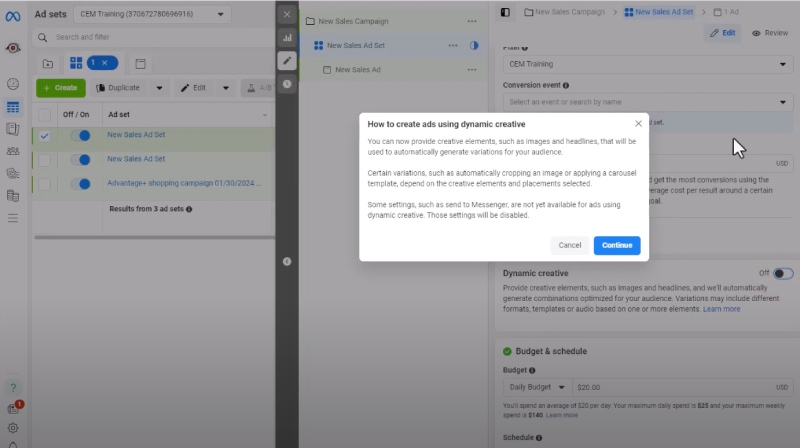
Required tools:
- Facebook commerce manager: Use this to manage your product catalog.
- Third-party catalog management: If using platforms like Shopify or WooCommerce, integrate with their catalog tools.
Catalog details:

- Product naming: Ensure each product name is clear and easily understandable to help customers quickly identify items.
- High-quality images: Upload sharp product images with a recommended size of at least 600 x 600 pixels.
- Product information: Verify that all product details, descriptions, pricing, and links are accurate and up-to-date.
Keynote: A well-prepared catalog is essential for Facebook to effectively match your ads with the most relevant products.
Step 2: Install Facebook Pixel and SDK
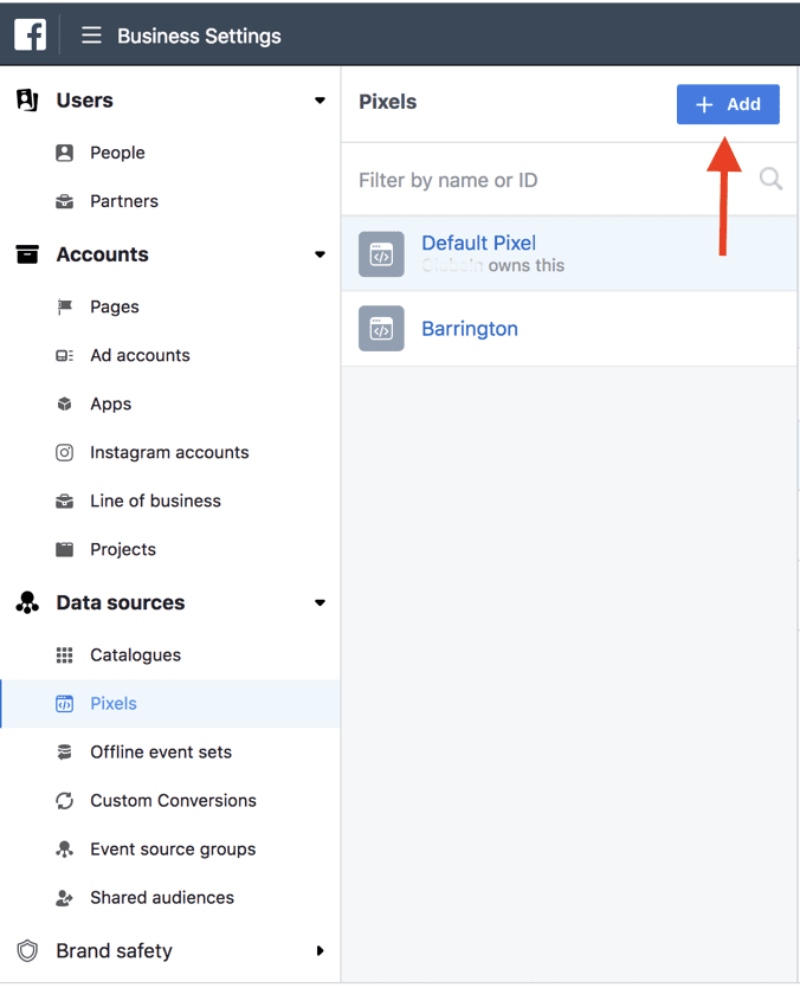
Pixel installation:
- Generate your pixel: Log in to Facebook Ads Manager, navigate to Events Manager, and either create or retrieve your Pixel code.
- Code placement: Insert the Pixel code into your website’s header, right before the closing </head> tag.
- Verification: Use the Meta Pixel Helper (a Chrome extension) to confirm proper installation and functionality.
- Event tracking: Configure key events (e.g., PageView, AddToCart, Purchase) to accurately track user interactions.
SDK installation for mobile apps:
- Download and integrate: Obtain the Facebook SDK from the Meta for Developers site and integrate it into your mobile application.
- Follow guidelines: Adhere to the detailed instructions provided in the Meta Developer documentation for setting up events within your app.
- Testing: Verify the SDK’s performance through Facebook’s interface to ensure all events are being tracked accurately.
Step 3: Design Your Dynamic Ad Template
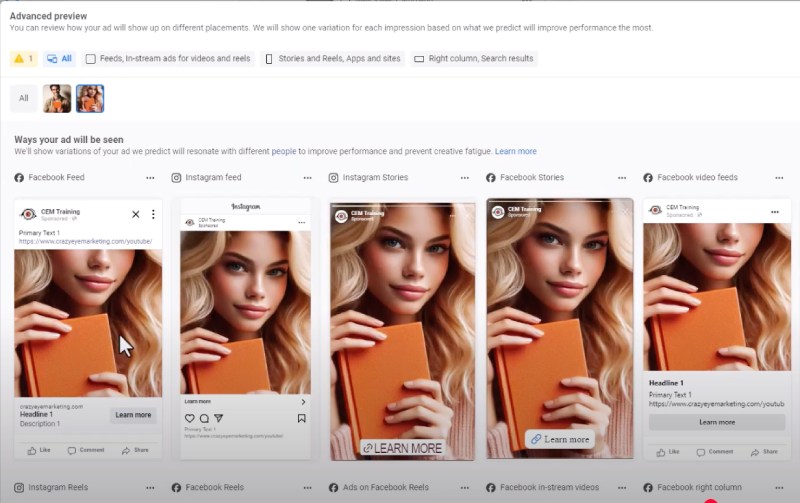
Ad format options: Choose the format that best suits your campaign goals: Single Image, Carousel, or Collection Ads.
Design guidelines:
- Visuals: Use standout product images set against a simple background to ensure the focus remains on the product.
- Dynamic overlays: Add promotional text or key product information directly on the image. Ensure the text is concise and impactful.
- Mobile optimization: Make sure your ad template is optimized for both mobile devices and desktops for a seamless user experience.
Optimization: Test different ad formats and creative elements to determine which version yields the best performance.
Best Practices for Facebook Creative Dynamic Ads
To maximize the effectiveness of Dynamic Facebook Ads, it’s crucial to follow best practices for ad creatives, targeting, and optimization. By using high-quality visuals, compelling ad copy, and well-structured product catalogs, businesses can enhance engagement and drive better conversions.
- Choose content that works well together: You can select up to 10 assets for your dynamic ad, but quality should always come before quantity. It’s better to combine two high-performing assets than to mix several that you’re unsure about. If you don’t have a lot of images or video content, you can also use multiple text variations to get started more easily.
- Use multiple call-to-action buttons: What do you want people to do after seeing your ad? Test different CTA buttons to determine which ones perform best.
- Reach the right audience: Combine dynamic content allocation with Meta Pixel to track ad performance and understand who is visiting your website.
- Keep your text short, clear, and to the point: People scroll quickly through Facebook Feeds, Facebook Stories, Instagram Feeds, Instagram Stories, and Instagram Explore.
- Draw attention to your visuals: Create ads with a single, strong focal point.
- Enhance images with motion: Add fast-forward effects, loops, and animations using free and easy-to-use apps like Hyperlapse, Boomerang, Legend, Videoshop, Adobe Photoshop Express, and Adobe Spark.
- Avoid placing text over images: Instead, use text fields, headlines, and link descriptions.
- Highlight the most compelling part of your video within the first few seconds: Introduce your brand identity immediately so viewers can see and remember it, then close with branding at the end. Keep videos under 15 seconds.
- Design videos to be engaging even without sound: People often watch videos on mute, especially in public places. To optimize for silent viewing, use text and graphics, tell your story visually, and include captions whenever possible (using auto-captioning tools or SRT files).
- Choose the right aspect ratio for ad placements: Since most people hold their phones vertically, use vertical aspect ratios for Facebook Feed, Facebook Stories, Instagram Feed, Instagram Stories, and Instagram Explore.

FAQs
1- What are the requirements for Dynamic Ads?
To use Facebook Dynamic Ads, businesses need a Product Catalog containing detailed product information. Additionally, you must set up Facebook Pixel or a mobile SDK to track user behavior and provide data for dynamic ads.
2- How much do Facebook Dynamic Ads cost?
The cost of Facebook Dynamic Ads depends on various factors, including target audience, budget, and industry competition. Facebook uses a Cost per Result (CPR) model, meaning costs fluctuate based on ad performance and your bidding strategy.
3- Are Dynamic Ads effective for small businesses?
Yes! Facebook Dynamic Ads are highly effective for small businesses, especially those with online stores. They allow businesses to reach the right audience at an affordable cost while automatically promoting products—without the need to create individual ads for each item.
Final Thoughts
Dynamic Facebook Ads are a powerful tool for businesses of all sizes, helping you automate, personalize, and optimize your ad strategy. By setting up your Product Catalog, Pixel, and bidding strategy correctly, you can drive better engagement and conversions with minimal manual effort.
Boost Your Ad Performance with NemiAds! Whether you’re a small business aiming for higher reach or a growing brand scaling your campaigns, Nemi Ads’ professional ad account rental services help you maximize results with cost-effective, high-performing Dynamic Ads.
